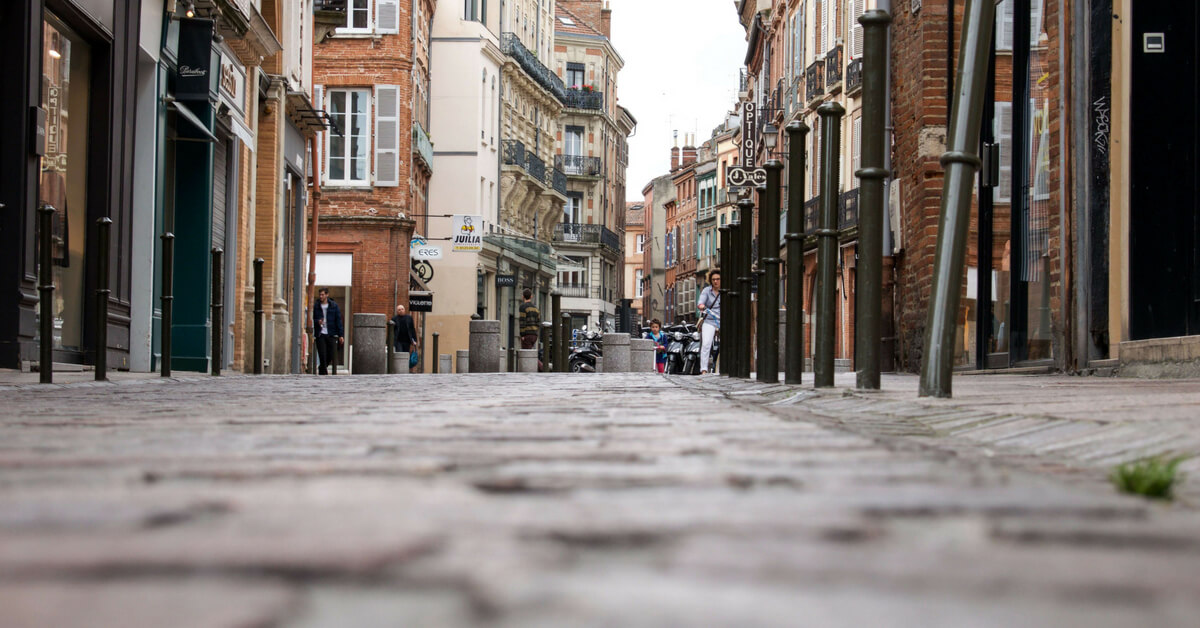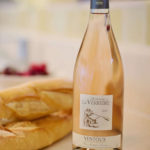Category: French Food & Wine
Discussed in this Episode
- French Wines
- Regional French Wines
- Wine Scholar Program
What You Will Learn About in this Episode
- 2’30 Guiguettes in Paris this summer.
- 6′ New cultural center at Boulogne Billancourt
- 7’30 Wine Scholar Program, why is France such a unique wine country?
- 11’30 The Wine Scholar Program explains the history of French wines.
- 14’35 French wine, much like the rest of France, are full of exceptions.
- 15’30 Wine Folly
- 16’30 The Champagne Region: labels should say “méthode traditionelle” instead of “méthode champenoise”
- 19′ The color of the wine comes from leaving the juice in contact with the skin for more or less time.
- 21′ The sweetness of champagne goes from “brut” (dry) all the way to “doux” (sweet).
- 22’30 The acidity of the wine balances the sugar. A wine with more acid can have more sugar in it, but you don’t taste it, it won’t taste sugary at all.
- 24′ Burgundy: high priced wines, renowned wineries. Aligoté.
- 26′ What the word “terroir” means in French. It’s the growing environment which includes the type of soil, rocky or not, windy or not, dry, wet, etc.
- 31′ In Burgundy they don’t blend wines like they do in the rest of France.
- 33′ Movie “Ce qui nous lie“
- 33’30 Bordeaux wines: the history of Bordeaux wines has been tumultuous because Chinese buyers love wines from this region.
- 36′ Wine blending, why they do it.
- 38′ South-West wines such as Fronton that most folks don’t know about.
- 39’30 Annie hates non blended Negrette wines, Elyse doesn’t mind them, but she also thinks Montmartre wine is OK.
- 41′ Cahors wines are mostly Malbec, Madiran is also a popular grape in the South-West. Corbières wines are also lovely.
- 42’30 Loire Valley wines.
- 45’30 Rhone Valley wines; Côtes du Rhône wines are a great value.
- 48’10 Languedoc-Roussillon makes the most wine by volume.
- 48’30 The relationship between climate and wine characteristics: in areas that get a lot of sun, grapes tend to thicken their skin when the sun hits them. If the skin is thicker, you will get more color, more tanins, more of certain aromatics. Areas that get less sun have wines with less vibrant colors, and the wine is more delicate. That’s why warmer regions produce beefier, heavier wines.
- 50′ With its long history with wine-making, France has had the time to stipulate which grapes are grown in specific areas. There were also political considerations. Burgundy was not part of France for a long time and when the French King (Charles the Bald) finally took over, he decreed that they were not to have any Gamay and use Pinot Noir instead.
- 51’40 The rules pertaining to which grapes are grown in which region are old, but they are also ever-changing. Changes will need to be made to take climate change into account.
- 52’15 Wines from the Alsace region. This area has a unique history and they also produce a wide variety of (mostly) white wines. 80% of Alsace wines are not blended.
- 53’15 Languedoc-Roussillon is a massive wine-growing region that makes 5% of wine production world-wide and 1/3 of France’s production.
- 54’56 A lot of organic wine is produced in the Languedoc-Roussillon because the wind makes it so they don’t have to spray so much.
- 55’31 When is it OK to stop by a vineyard and when is it not? Don’t do it in Burgundy, it will only work half of the time in the Bordeaux are, but you can totally stop by unannounced in the Languedoc-Roussillon area.
- 56’30 Tastings in Napa vs. in France. Depending on the time of year, you may stop in at a very busy time of year. Check the websites. But in the Languedoc-Roussillon, they are casual about visitors.
- 58’15 Beaume-de-Venise is an example of how wine regions don’t always overlap 100% with geographical regions.
- 60′ French people do drink a lot of rosé as soon as the weather warms up. We drink more rosé than whites. Not many wines.
- 61′ Rosé Piscine is very popular in the summer, so are rosé wines mixed with a little grapefruit juice.
- 65′ Do French people think of wine as a food? Yes, the wine is part of the meal, it’s almost like one block that goes together.
- 68′ I don’t know if the average Americans drink more than French overall because we don’t binge.
- 70′ The health message people shouldn’t drink alcohol every day but rather take days off is starting to percolate through to French people. French people are also moving towards higher quality wines.
- 86′ Feedback from Nancy Caulkins about the Canal Saint-Martin.
| Cool Climate | Major Grapes | Styles | Facts |
| Bordeaux | Cabernet Sauvignon; Merlot; Cabernet France; Malbec; Petit Verdot; Camenere; Semillon; Sauvignon Blanc | Big beefy reds.
Dry whites. Sweet dessert whites. |
“Soil+grape variety=wine style”
Most Cab & Merlot planted worldwide Mostly blends to adjust for season variation. |
| Burgundy | Pinot Noir, Gamay, Chardonnay | Lighter, earthy reds.
Dry, crisp whites (w/ or w/out oak). |
“Terroir” based wines
Single varietal wines |
| Alsace | Riesling; Pinot Blanc; Gewurztraminer; Pinot Gris; Sylvaner; Muscat; Pinot Noir | 90% is white.
Dry to sweet whites. |
80% production is varietally labelled.
20% are blends. Germanic influence |
| Champagne | Chardonnay; Pinot Noir; Pinot Meunier | Brut to Doux
Blanc de Blancs Blanc de Noir Rosé |
Cold & harsh weather
Too cold to make good still wine Name is now protected |
| Rhone | Viognier; Marsanne; Roussane; Syrah; Grenache; Mourvedre; Carignan; Cinsault | N: Whites are still & dry. Reds are dry with significant tannins to age and develop over time.
S: Dry or sweet fortified whites. Dry or sweet reds. |
2nd largest wine producer
Southern part actually in Provence. “Cotes du Rhone” some of the best wine values. GSM blends.
|
| Loire | Muscadet; Pinot Gris; Chenin Blanc; Sauvignon Blanc; Chardonnay; Cabernet Franc; Cabernet Sauvignon; Pinot Noir; Gamay | Lower: Crisp, dry whites from Muscadet. Sur lie aged.
Middle: Red/White/Rosé Dry/sweet/sparkling Upper: Red/White/Rosé |
Named after Loire river.
Stretches 634 miles from central France to Atlantic coast. Broken into 3 sub-regions with 3 distinct climates: Lower (Pays Nantais); Middle (Anjou/Saumur/Touraine) and Upper (Sancerre/Pouilly-Fume/Menetou-Salon). Upper region is close to Burgundy and resembles both the grape varieties and soil type. |
| Warm Climates | |||
| Languedoc-Roussillon | Grenache; Roussanne; Marsanne; Piquepoul Blanc; Carignan; Mourvedre: Syrah; Cinsault | Largest wine region in world (5% of world production, 1/3 of France’s production), diverse.
¾ Red, white; rosé; sparkling; dry-to-sweet Red blends are typically dominated by carignan, syrah or Grenache. |
Similar grapes to Rhone and Bordeaux
Most wines made for immediate for immediate drinking. Warm dry windy Mediterranean climate allows for organic viticulture. High QPR wines.
|
| Provence | Grenache, Cinsault, Syrah, Mourvedre, Similar whites to Rhone | Dry rosé dominates, but red & white made. Mostly dry.
|
Classic Mediterranean climate with Mistral wind.
French rosé outsells white wine in France. A typical American blush wine contains ~ 7X as much residual sugar per liter as a Provençal rosé. |
Subscribe to the Podcast
Apple YouTube Spotify RSSSupport the Show
Tip Your Guides Extras Patreon Audio ToursRead more about this show-notes
Episode PageCategory: French Food & Wine


